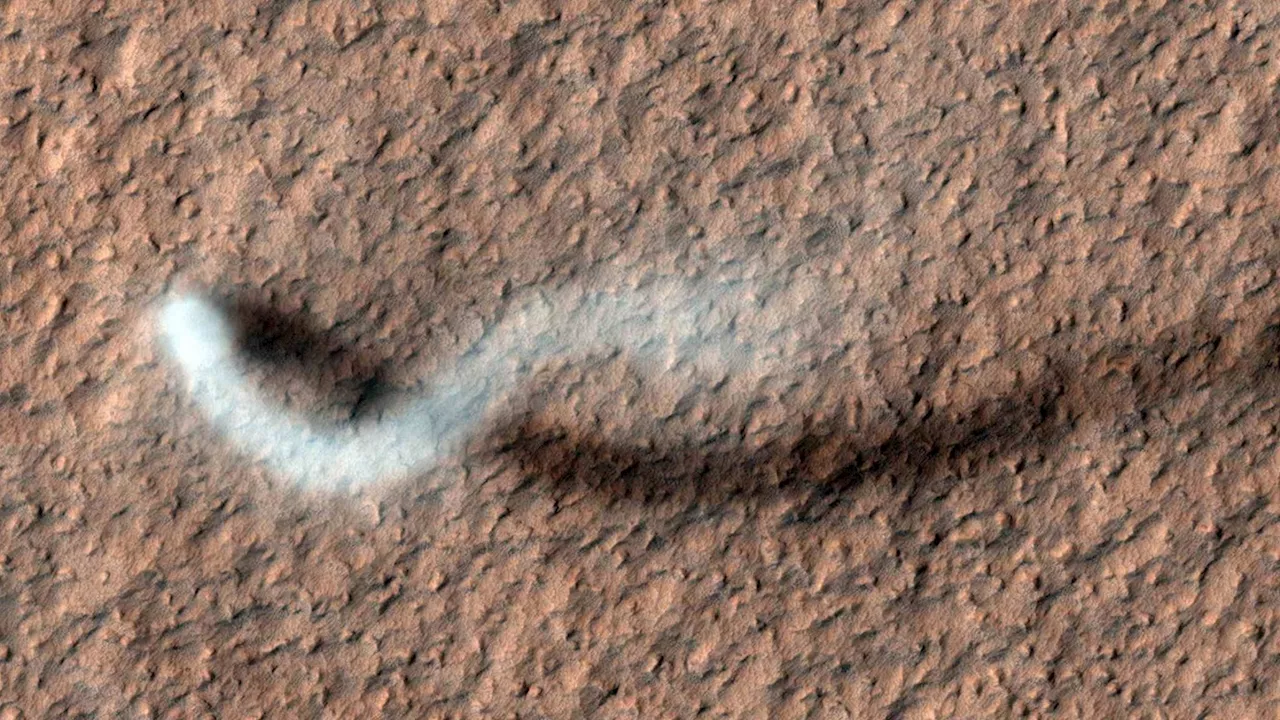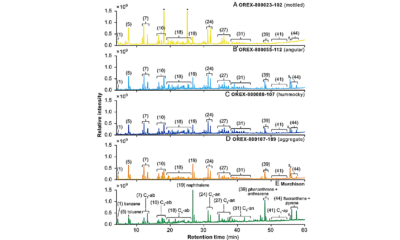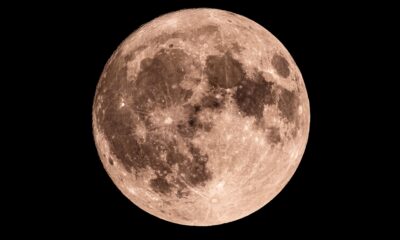Science
Perseverance Rover Captures First Evidence of ‘Mini-Lightning’ on Mars

NASA’s Perseverance rover has made a groundbreaking discovery by detecting faint electrical discharges on Mars, suggesting that the planet’s atmosphere may be more electrically dynamic than previously believed. This finding marks the first evidence of “mini-lightning” occurring amidst dust storms and swirling dust devils on the Red Planet.
Researchers, led by Baptiste Chide from the Institute for Research in Astrophysics and Planetology in Toulouse, analyzed 28 hours of microphone recordings collected over two Martian years. They identified a total of 55 distinct electrical discharge events, which appeared to correlate with strong winds, dust devils, and storm fronts. Notably, most of these discharges clustered within the upper 30 percent of recorded wind events, with 16 occurring during close encounters with dust devils.
The electrical discharges, while too faint to be classified as traditional lightning, produced audible crackling sounds near the rover’s microphone. This phenomenon, known as triboelectricity, arises from the interaction of dust particles. On Earth, similar interactions can create small shocks when one touches a metal object after walking on a carpet. Mars, with its thin carbon dioxide atmosphere, facilitates the generation of such electrical arcs more easily than Earth.
While scientists have long suspected that Martian dust storms could generate electrical energy, this is the first time such activity has been recorded audibly. “It sounded like a spark or whip-crack,” said co-author Ralph Lorenz. This discovery has significant implications for understanding Martian atmospheric chemistry, climate dynamics, and potential habitability.
The presence of electrostatic discharges could influence chemical reactions within the Martian soil and atmosphere, potentially altering the planet’s surface chemistry and impacting the preservation of organic molecules. As exploration of Mars intensifies, these small electrical sparks could also pose risks to future missions, whether robotic or human.
Though the findings are groundbreaking, researchers caution that the evidence currently consists solely of audio and electromagnetic signals; no visual flashes or optical data have been observed. The team is advocating for enhanced instruments and improved atmospheric models to better quantify the frequency and implications of these discharges on Mars’ climate and dust transport.
This research is published in the journal Nature, underscoring the importance of continued investigation into the complexities of Martian weather. The discovery of these electrical phenomena opens a new chapter in the exploration and understanding of our neighboring planet.
-

 Technology4 months ago
Technology4 months agoDiscover the Top 10 Calorie Counting Apps of 2025
-

 Health2 months ago
Health2 months agoBella Hadid Shares Health Update After Treatment for Lyme Disease
-

 Health3 months ago
Health3 months agoErin Bates Shares Recovery Update Following Sepsis Complications
-

 Technology4 weeks ago
Technology4 weeks agoDiscover 2025’s Top GPUs for Exceptional 4K Gaming Performance
-

 Technology2 months ago
Technology2 months agoElectric Moto Influencer Surronster Arrested in Tijuana
-

 Technology4 months ago
Technology4 months agoDiscover How to Reverse Image Search Using ChatGPT Effortlessly
-

 Technology4 months ago
Technology4 months agoMeta Initiates $60B AI Data Center Expansion, Starting in Ohio
-

 Technology4 months ago
Technology4 months agoRecovering a Suspended TikTok Account: A Step-by-Step Guide
-

 Health4 months ago
Health4 months agoTested: Rab Firewall Mountain Jacket Survives Harsh Conditions
-

 Lifestyle4 months ago
Lifestyle4 months agoBelton Family Reunites After Daughter Survives Hill Country Floods
-

 Technology3 months ago
Technology3 months agoUncovering the Top Five Most Challenging Motorcycles to Ride
-

 Technology4 months ago
Technology4 months agoHarmonic Launches AI Chatbot App to Transform Mathematical Reasoning





















